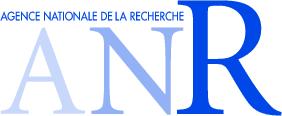BINGO!'s Wiki
Introduction
Welcome to the BINGO!'s Wiki. BINGO!, which stands for "history of Baryons: INtergalactic medium/Galaxies cO-evolution", is a 5-year ANR ("Agence Nationale de la Recherche"; http://www.agence-nationale-recherche.fr/) funded project running from January 2009 until December 2013 (ANR-08-BLAN-0316-01). BINGO! is a consortium of three institutes based in Marseille, Lyon and Paris. The science case for the project is summarized below.
Understanding galaxy formation is one of the major goals of modern cosmology. While observers primarily use large galaxy surveys for mapping structure and galaxy evolution nearby and far-away, spectacular measurements of the cosmic microwave background have allowed the understanding of the initial conditions that seeded the cosmic structures we see today. Models predict that the dark matter seeded by primordial quantum fluctuations formed the architecture of the Universe, a “cosmic web” of sheets and filaments of dark and normal (baryonic) matter. We now know the basic constituents of mass-energy today: 73% dark energy, 23% dark matter, 1% baryons in galaxies, and 3% "hidden" baryons.
The next challenge is to understand the physical processes of the formation of galaxies and structures and their interactions with the tenuous medium in between galaxies: the Intergalactic Medium (IGM). The IGM traces the cosmic web of matter in the Universe, including normal (“baryonic”) matter and the mysterious dark matter known to pervade the Universe. The IGM forms and connects galaxies, fuels them throughout time, and may be profoundly changed by their feedback of energy, matter, and chemical elements.
Tremendous progress has been made over the last decade in establishing a broad cosmological framework in which galaxies and large-scale structure develop hierarchically over time, as a result of gravitational instability of material dominated by dark matter. However, many questions remain: how do galaxies form and how are they related to their environments? When did the first luminous objects form and what was their nature? All of these questions are closely related to the amount of baryons and metals contained in the Universe at any given time, and in particular in the Intergalactic Medium (IGM). Once formed, galaxies interact with the IGM by pervading it with ionising photons, by polluting it with heavy elements formed in stars and supernovae, and by driving supersonic, galactic winds into intergalactic space. The feedback processes of photo-ionisation (and photo-heating), chemical enrichment, and shock-heating of the IGM by the first stars and galaxies is thought to have profound consequences for the formation of subsequent generations of galaxies. We propose here to study the intergalactic medium, its baryonic content and interactions with galaxies using a mix of observational techniques, state-of-the-art simulations and dedicated instrumentation.
Publications
The list of publications from the BINGO! project can be found here: https://ui.adsabs.harvard.edu/#search/q=ack%3A%22ANR-08-BLAN-0316-01%22&sort=date%20desc
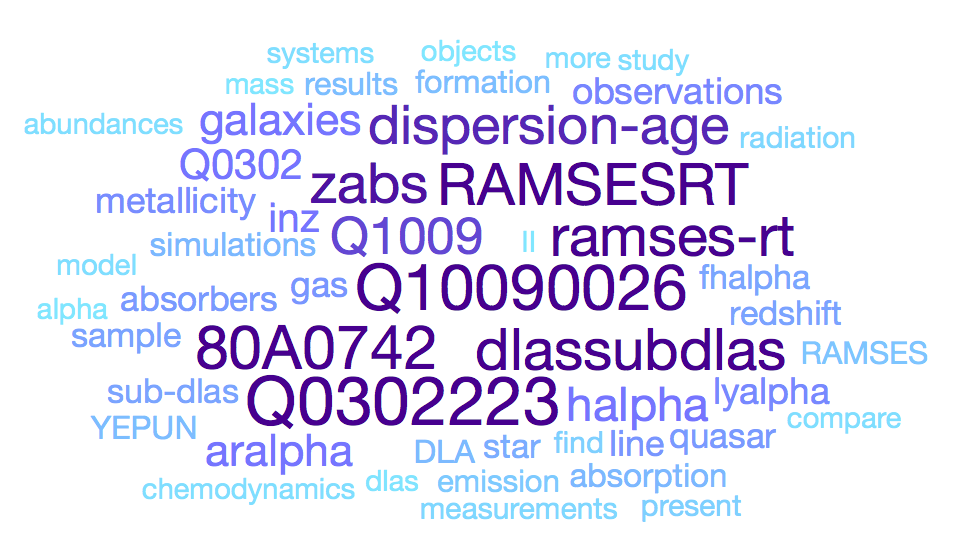
Who's Who
The consortium brings three major nodes of the French astronomical society together. At the Laboratoire d'Astrophysique de Marseille (LAM), the expertise is on the observations of galaxies (L. Tresse, J.-M. Deharveng), absorption techniques to study the IGM (C. Peroux, B. Milliard) as well as UV instrumentation and observations (B. Milliard, J.-M. Deharveng). The Centre de Recherche Astronomique de Lyon (CRAL) is bringing a known expertise into observations-oriented semi-analytical approaches to galaxy formation in cosmological context (J. Blaizot). The Paris node includes two of the founding members of the HORIZON consortium (http://www.projet-horizon.fr/), a unique effort in France, to use hydrodynamical simulations to simulate chunks of the Universe from physically-motivated initial conditions (R. Teyssier, Y, Rasera). Finally, the most sophisticated spectral analysis tools developed at the Institute of Astrophysique de Paris (S. Charlot) are used internationally to reproduce observations at various wavelengths. These various expertise will be brought together to tackle issues related to our understanding of galaxy formation and interaction with its environment in a cosmological context.
Marseille
Marseille is a sea-side town in the Provence region, south of France. The « Laboratoire Astrophysique de Marseille » (http://www.oamp.fr) is a high-ranking research organisation headed by Olivier Le Fevre with international reputation in several fields of astrophysics: cosmology, galaxy evolution, galaxy dynamics, interstellar medium, physics of galaxies, modelisation and observation of exo-planets - COROT, HARPS, CASSINI/MAPS - and comets). The LAM, together with the Observatoire de Haute Provence (OHP), is part of the federative Observatoire Astronomique de Marseille-Provence (OAMP). Of particular importance for this project is the cosmology group (http://www.oamp.fr/cosmology/) headed by Jean-Paul Kneib, a growing centre in France (more than 20 researchers + post-doctoral researchers + students), involved in many projects both observational and instrumental (for space and ground-based observatories). The group's particular experise resides in 1) deep galaxy surveys, i.e. a statistical and multi-wavelength approach on galaxy evolution using GALEX, VLT/VIMOS, HST, Spitzer, Herschel; 2) supernovae to obtain constrains on the cosmological parameters using SNAP and SPACE/DUNE 3) gravitational lensing as a tool to study the dark matter distribution in bounded structures (clusters, groups and galaxies); 4) the first galaxies in the Universe to find and study the most distant galaxies (Ly-alpha search, lensing search); 5) the physics of clusters of galaxies: from low to higher redshifts and of course 6) the IGM properties through the observations of distant quasars and spectra of various sources (FUSE, GALEX, ESO telescopes, etc). In addition, it might be worth mentioning a number of instruments/surveys in which the LAM is currently or will in the future be involved: VVDS, COSMOS survey, CFHT Legacy Survey, CFHT Super Novae Legacy survey, WIRcam Deep Survey, Z Equals Nine survey (Lyman-alpha search in the near-infrared) and CENCOS (a database center for cosmological surveys). On the instrumentation side, the UV expertise linked to a long-standing history of building space-based UV satellites (i.e. FOCA, FUSE, GALEX) makes the LAM a place of prime interest for the proposed project.
Moreover, the LAM is organising every summer an international conference bringing together over hundred researchers from across the world on a topic of particular relevance in that period. Furthermore, the close contacts with the Particle Physic community (CPPM+CPT) at the Universite de Marseille (Luminy) provide expertise on a broad range of topics which attract both high-level visitors and bright student at pre-doctoral and doctoral level.
- Bruno Milliard:
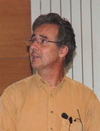
- Jean-Michel Deharveng:
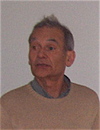
- Laurence Tresse:

- Didier Vibert:
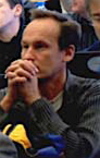
- Antoine Llebaria:
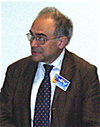
- Robert Grange:
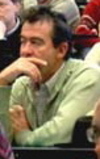
- Simon Conseil: Postdoc CNES (2008-2011), now Observatoire de Lyon, France
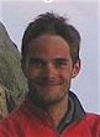
- Stephan Frank: Postdoc CNES (2008-2011), now Ohio State University, USA

- Attila Popping: Postdoc ANR (2009-2010), now Research Assistant Professor at ICRAR, Australia

- Tayyaba Zafar: Postdoc ANR (2011-2013), now Research Astronomer, AAO, Australia

- Samuel Quiret: CNES PhD student (2013-2016)
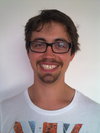
- Pierre Mege: CDD ANR/CNES (2013-2015)
- Celine Peroux:

Lyon
Lyon is situated at the foot of the French Alps. The Centre de Recherche Astrophysique de Lyon (CRAL), at the Observatoire de Lyon (http://www-obs.univ-lyon1.fr/), has has recently contributed to major instrumental projects in 3D spectroscopy (i.e. OASIS, SAURON, MUSE) but also has a unique world-class expertise in semi-analytic modeling (in particular with GALICS), in the construction of mock catalogues (MOMAF, MOLUSC), and in the analysis of cosmological simulations (N-body, SPH, and AMR). This know-how has allowed the CRAL to play a major role in the HORIZON Project (funded by the ANR).
Our group has developed along the years a unique tradition of interaction between modelers and observational projects. In particular, we are closely collaborating with the VVDS team and with the GALEX team in Marseille. The CRAL hosts the PI (R. Bacon) and one co-I (B. Guiderdoni) of the MUSE instrument (to be on VLT); and J. Blaizot and others at the CRAL are members of the MUSE science team. The CRAL is also playing a key role in the technological development of NIRSpec (to be on the JWST), with the participation of P. Ferruit; and the CRAL is part of the ELIXIR european network (coordinated by S. Charlot) which aims to support the scientific preparation of guaranteed time observations with the JWST. J. Blaizot is also part of a couple of ESO large program proposals (PIs: G. Guzzo, S. Arnouts), and of the SPACE mission proposal to ESA (PI: A. Cimatti).
On top of a solid French network, our group has also developed strong interactions with the Oxford department of astrophysics and with the Potsdam Institute for Astrophysics. These collaborations will contribute to the smooth development of our project. Moreover, the CRAL is organising every second summer an international conference on selected topics.
- Jeremy Blaizot:
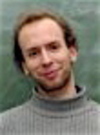
- Stephanie Courty:

Paris
The Paris Observatory (http://www.obspm.fr/) is the largest research center in astronomy and astrophysics in France. The research is organised around the principal topics in astronomy and astrophysics: Meteorology of space and time, Sun and Sun-Earth system, Planetary systems, Interstellar Medium, Stellar Physics, Physics of galaxies, cosmology, Compact Objects and gravitational waves, History of sciences. Y. Rasera, recently appointed as a lecturer at the OBSPM has been doing is PhD at CEA/Saclay under the supervision of R. Teyssier a few years back. Both Y. Rasera and R. Teyssier have been active forefront participants in several of the modern and most successful AMR simulations in Europe within the project HORIZON (http://www.projet-horizon.fr/). The objective of the HORIZON Project is to federate numerical simulations activities with a program focused on Galaxy and Large Scale Structure Formation. In a context favorable to HPC (High Performance Computing), the PNC (Programme National Cosmologie), the PNG (Programme National Galaxies) and the PAP (Programme Astroparticule), express their needs to stimulate and coordinate individual efforts in HPC among each domain. The HORIZON Project was build on several research teams in different institutes. The scientific objective is specifically oriented towards studying galaxy formation in a cosmological framework. Its transverse and federative nature will however allow to develop in a few years high-level expertise in parallel and distributed (GRID) computing, in database management and virtual observations, in applied mathematics and computer science, and build in the same time a strong theoretical knowledge in astrophysics. The coupling of numerical/theoretical expertise with the observational data is promising in term of obtaining improved understanding of the physical processes related to galaxy formation in the distant Universe. Scientific expertise is strong in the field of galaxy formation and evolution. The Institut d'Astrophysique de Paris (IAP; http://www.iap.fr/) at the forefront of current research in several topics directly associated to the subject of this proposal, in particular the physics of galaxies. The IAP is one of the 5 institutes of the European Association of Research in Astronomy (EARA), and on of its 3 founding members. The IAP has a staff of 160 scientists, engineers, technicians, administrators and graduate students, and regularly hosts numerous student trainees and foreign visitors. Each year, the IAP is holding an international conference on a topic relevant to cosmology.
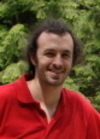
- Romain Teyssier:
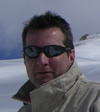
- Stephane Charlot:

Pages
- Pointers to simulation/cones/plots...
- info on progresses on the UVES-based part of the project
FullProposal (password protected)
- a pdf version of the application
- Minutes of our meetings (password protected)
- Conferences of interest (password protected)
- Papers of interest (password protected)
- info about this wiki (password protected)
Software wiki (Redmine)
